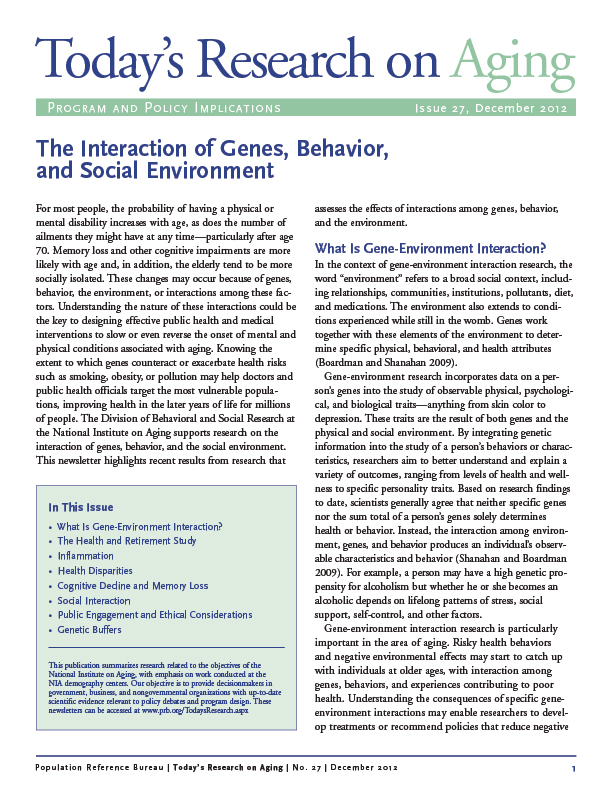497 Search Results Found For : " ʸī rqc912.top Ʈ 继īƮ Time slot ¶īƢ ػ罺 Ȧ PC ī Ȳ"

Project: Demography and Economics of Aging and Alzheimer’s Disease
The Interaction of Genes, Behavior, and Social Environment
Today's Research on Aging, Issue 27: For most people, the probability of having a physical or mental disability increases with age, as does the number of ailments they might have at any time—particularly after age 70.
PRB Discuss Online: Demographic Divide, Diverging Population Growth Trends
September 2008) More than 80 million people were added to the world's population in 2008, which ensures continued growth in coming decades.
How Family Planning Could Help Slow Climate Change
(2015) In the mid-1990s, I served as a Peace Corps volunteer in a village in Niger, a West African country consistently ranked as one of the poorest in the world. I lived in a mud hut, learned a local language, made lasting friendships and did interesting work.

Understanding Population Projections Infographic
(2014) This infographic uses three main projections produced by the UN Population Division to illustrate how assumptions can produce significantly different results over time.

First Results From the 2010 Census
(2011) Ten key findings about how the U.S. population has changed.

Project: PACE: Policy, Advocacy, and Communication Enhanced for Population and Reproductive Health
2020 World Population Data Sheet Lesson Plan Slidedeck (PPT)
(2020) PRB’s World Population Data Sheet is an excellent reference and data analysis tool. This series of short activities allows students to access a wealth of data on the world, regions, and individual countries, and develop their data literacy skills and knowledge of geography.


